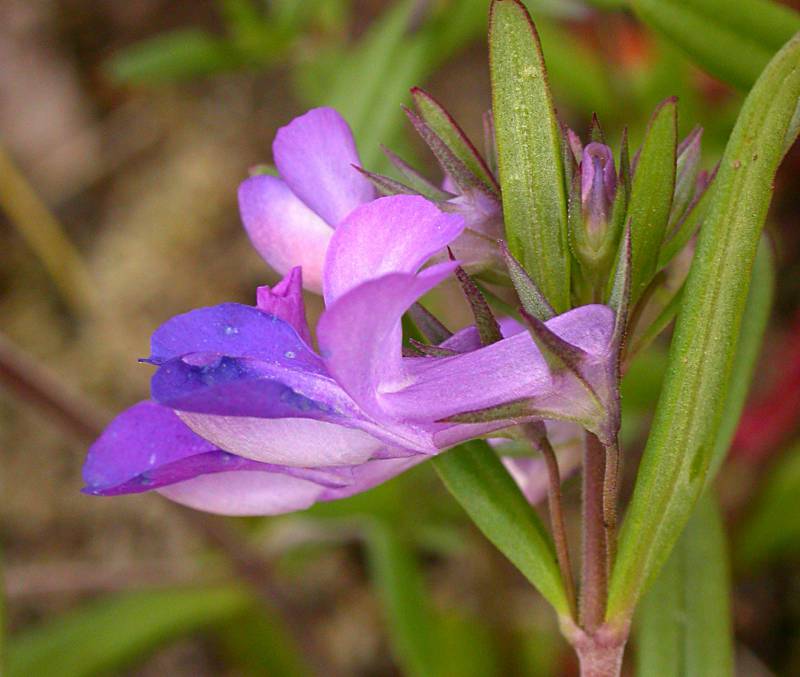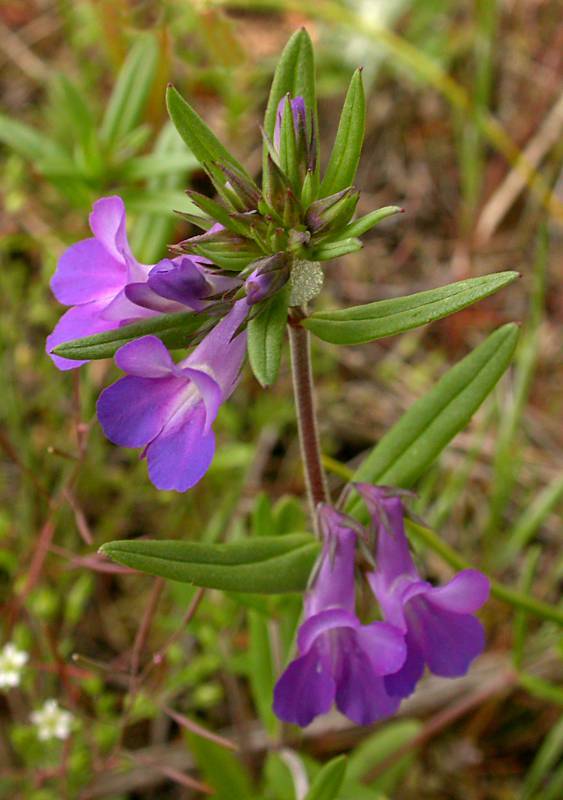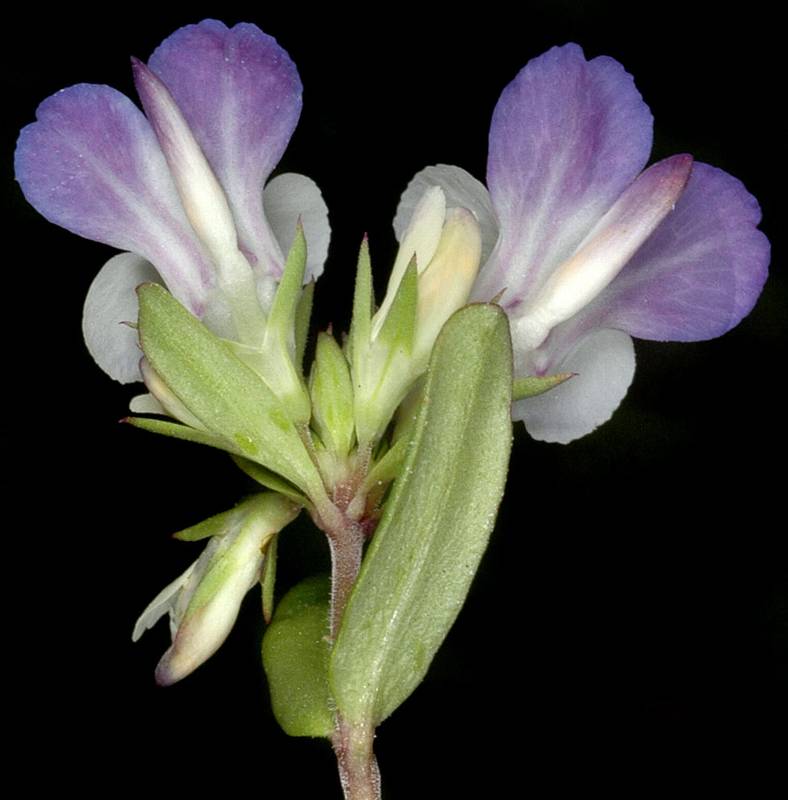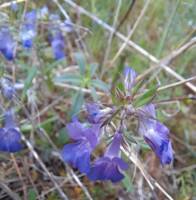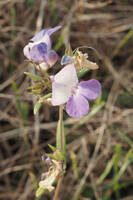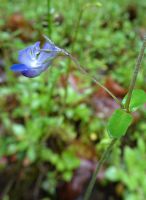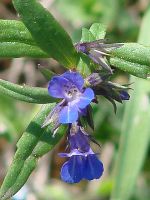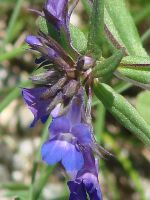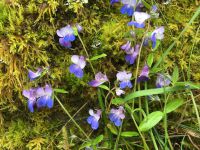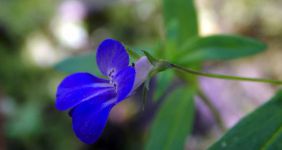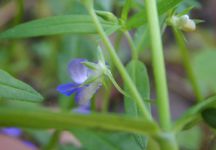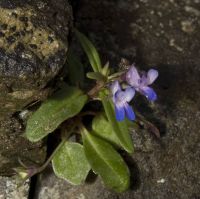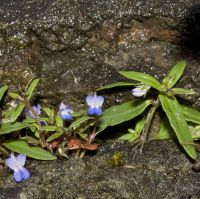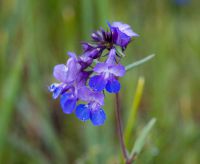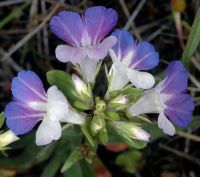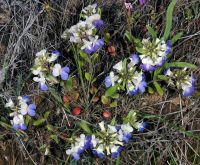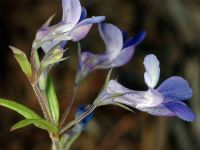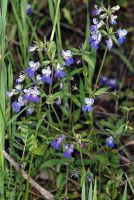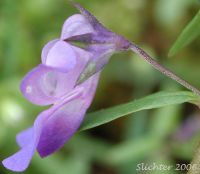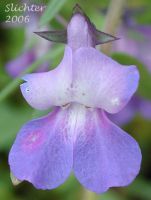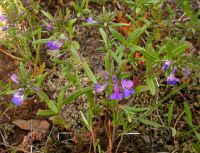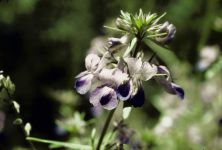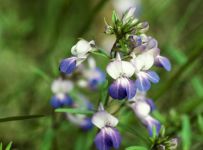Distribution: Occurring west of the Cascades crest in Washington; British Columbia to California.
Habitat: Open, moist to rather dry areas, low to middle elevations in the mountains.
Flowers: April-June
Origin: Native
Growth Duration: Annual
Conservation Status: Not of concern
Pollination: Bumblebees, bees, flies, beetles, wasps
Annual, the stem simple or branched, erect, 0.5-5 dm. tall, minutely pubescent.
Lower leaves opposite, petiolate, often toothed when well developed; upper leaves opposite or whorled, entire, usually glabrous, becoming sessile upward, narrowly elliptic or oblong to nearly linear.
Flowers 1-few on short pedicels in the axils of reduced upper leaves; calyx 5-8 mm. long, 5-lobed; corolla bi-labiate, blue with white or pinkish upper lip, 9-17 mm. long, the tube abruptly bent at a right angle to the calyx, shortly pouched at the bend; stamens 4.
Capsule opening along 4 lines.
Publication: Bot. Reg. 13: pl. 1107. 1827.
PNW Herbaria: Specimen records of Collinsia grandiflora in the Consortium of Pacific Northwest Herbaria database.
WA Flora Checklist: Collinsia grandiflora checklist entry.
OregonFlora: Collinsia grandiflora information.
E-Flora BC: Collinsia grandiflora atlas page.
CalPhotos: Collinsia grandiflora photos.
USDA Plants: Collinsia grandiflora information.

